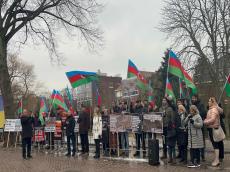|
Getting your Trinity Audio player ready...
|
Anita Simha, Louisiana State University, USA, discusses their article: Short-term prescribed fire frequency manipulation alters community response to subsequent fires in a Southeastern pine savanna
Fire regimes are shifting globally
Fire is a key disturbance that affects plant communities, but one challenge of studying the effects of fire is that the impacts of any one fire can differ in the context of the longer-term burn regime. For example, fires can be more severe if a longer time has passed since an area was last burned. The effect of fire history on plant community responses to future fire are particularly important to understand in an era of global change. Fires are changing globally, with fire-prone conditions, including low precipitation and high temperatures, expected to increase in many parts of the world. At the same time, agricultural expansion into savannas and grasslands is resulting in decreasing the global area of land that is burned. Because of the myriad ways that burn regimes are shifting due to human and environmental factors, understanding the impacts of recent fire history on plant communities is an urgent task.

Fire frequency experiments are uncommon and valuable
Our study took place in a longleaf pine savanna on Fort Liberty (formerly Ft. Bragg), a fire-dependent ecosystem in North Carolina, USA, that is managed with regular prescribed burns. It is fire-adapted due to frequent lightning strikes, as well as historic and current-day Indigenous-stewarded burns. After a period of fire suppression, managers at Ft. Liberty began prescribing burns in the 1990s on a triennial basis. The region is known as the Sandhills, and vegetation varies predictably from the dry, sandy uplands to the riparian wetlands. From 2011-2014, a fire frequency experiment ranging from full suppression to annual burning was conducted on the army base across replicated burn blocks, each spanning the uplands to lowlands. We also continued collecting community composition data for three years afterwards.
Fire history is an important determinant of plant community composition and fire response
At the end of the experiment in 2014, we found that plant community composition differed based on its burn history, with less frequently burned areas experiencing woody encroachment. Unburned and once-burned sites also accumulated more overall plant material than sites that burned more frequently. Furthermore, plant communities responded more strongly to fire (by losing more plant material) when more time had passed since they were last burned, though communities across the range of fire-free intervals were able to recover within a year. Finally, plant communities in the wetter, lowland areas responded more negatively to fire than upland vegetation. Some key species in this system such as wiregrass (Aristida stricta), dwarf huckleberry (Gaylussacea dumosa), and longleaf pine (Pinus palustris) also responded more negatively to fire after a longer fire-free interval.
Key Takeaways
Woody encroachment took place quickly in this study, over the course of just four years. A longer period between fires (though still on a within-decade scale) resulted in a stronger response to the next fire in terms of vegetation loss. Postfire recovery took place within a year, but this could be disrupted. Finally, though not all species were sensitive to fire history, several key species in the system are.
Interestingly, the number of species in our plots did not decrease under fire suppression, and plots did not lose more species when they burned after a long fire-free period either. We know that long periods of fire suppression lead to species loss and conversion of savanna to forest, but this process may take place on a longer time scale.
Lastly, a personal takeaway for me has been the value of high-quality, multi-year datasets. My PhD advisor and I lovingly called this effort my dissertation’s “COVID chapter,” because we conceived it in spring 2020 when our study site had shut down to visitors. Thankfully, I was able to ask some interesting questions using 7 years of burn and plant community data that had been collected across many replicated sites.
